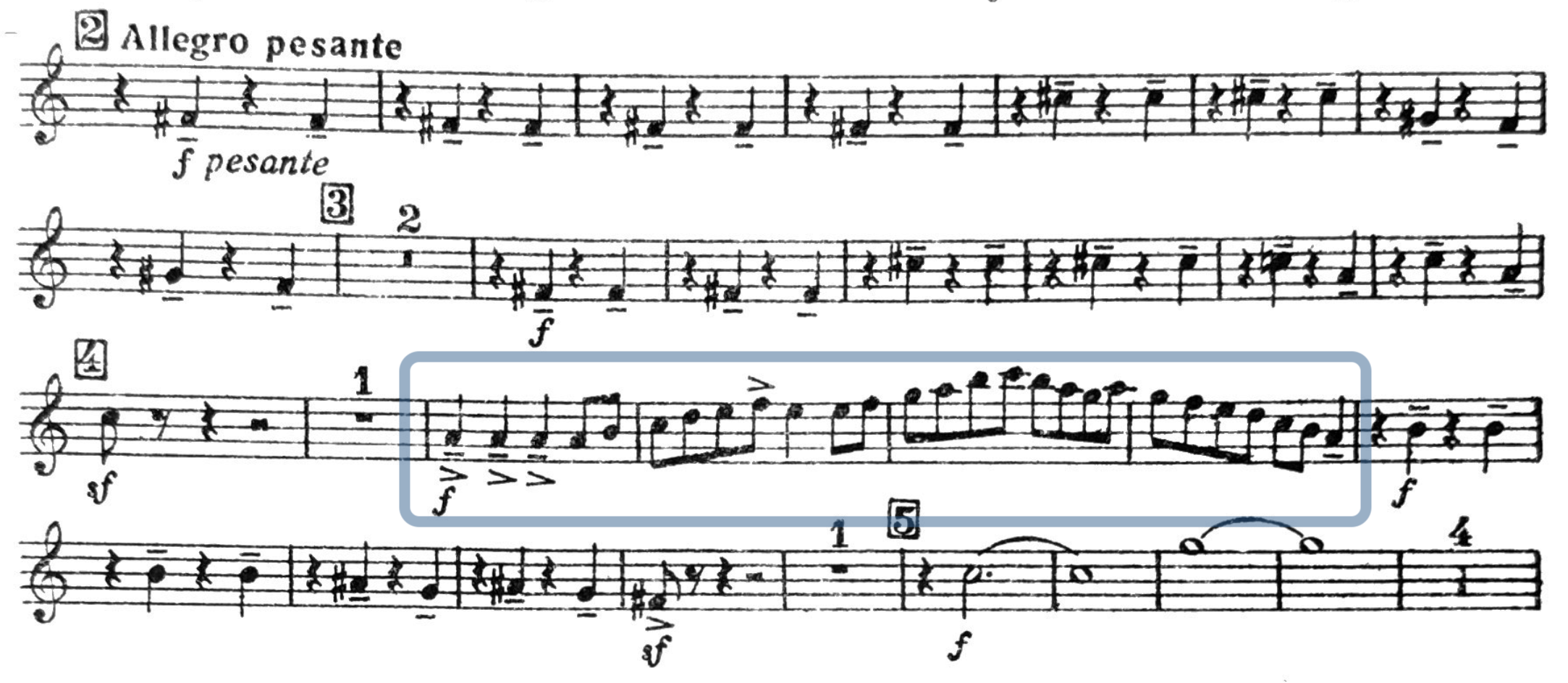Before the first rehearsal for Prokofiev Romeo & Juliet Suite No. 2, I thought this scale up to the written C6 was going to be fine.

Prokofiev, Romeo & Juliet Suite No. 2, I, Horn 1 in F
During the rehearsal, though, my buzz simply dropped out near the top, and I couldn’t reestablish it until somewhere around the G5 on the way down. Later, when the conductor led us through this section again, the same thing happened.
A few days later, in my practice at home, I put this back on the stand and tried it once more, starting at rehearsal 2. When the buzz dropped again, in the same place, I put my horn down and stared at the music stand. OK, I thought, this is a problem, and I need to fix it before the next rehearsal. What’s going on?
If my teacher, Hazel, hadn’t been on tour at the time, I might have tried to schedule a troubleshooting lesson, but that wasn’t an option. Still, I thought, if I were sitting in a lesson, what would she say?
“Try playing it slurred,” imaginary Hazel said.
I tried it that way, and the scale came out clearly and without excessive effort or tension. Hmm, what does that mean? Well, when I play it as written, my tongue must be disrupting things somehow. Perhaps it is disrupting the air flow or the aperture, or maybe the timing of the tongue movement is off.
I played it again several times, tongued, experimenting with different articulation points, timing, and so on. There was some improvement, but not enough, and it didn’t seem reproducible. I paused and stared at the music again. What kind of disruption would cause the buzz to drop out?
Maybe, I thought, my aperture is just too spread, and adding the tongue is making it worse. After a discussion with Jesse McCormick at horn camp last summer, I have suspected that my aperture tends to be too spread throughout the entire range, but it’s much harder to get away with that in the upper range.
I started again with the 3rd bar of 4, slurred, concentrating on starting and keeping a very small aperture, like a coffee stirrer straw. (Thank you, Randy Gardner, for the useful visual.) That immediately helped. I experimented with adding a quick breath after the quarter note in the 4th bar of 4, not because I needed the air, but to make sure my aperture was still small, and flexible, and ready to handle the increased air velocity on the way to the high C.
When that worked, I went back and started at rehearsal 2 and played through the first 4 bars of rehearsal 5. Everything was much improved.
The changes also help me handle the various high Bs in the piece, such as this one in the fifth movement, 2nd bar of rehearsal 48.

Prokofiev, Romeo & Juliet Suite No. 2, V, Horn 1 in F
I’m happy to take the win, and I’m grateful to Hazel for teaching me over the years how to self-diagnose and troubleshoot playing problems.